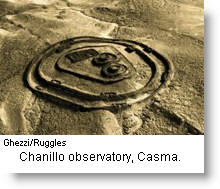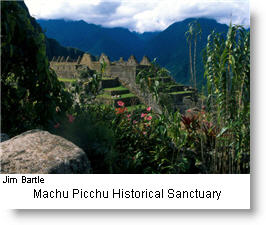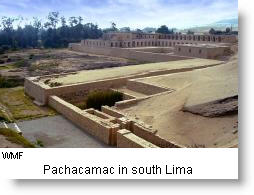
Peru’s minister of Foreign Trade and Tourism, Martín Pérez, opened the 35th Asia Pacific Economic Cooperation’s Working Group meeting Thursday in Cusco. The meeting is being held in the Sacred Valley, with 85 representatives attending from 21 APEC nations. The APEC forum accounts for 50 percent of the world’s Gross Domestic Product.
The focus of the meeting is community-based tourism, a facet of the travel industry that is gaining momentum in APEC countries and has had growing success in Peru. “We will be sharing our experience,” Pérez said.
Machu Picchu in danger of overexposure

The government and travel businesses in Peru are focusing on building the industry and spreading it to include new destinations and products, but the country’s key attraction is still the Inca citadel of Machu Picchu and it is showing signs of overexposure. Other sites, meanwhile, are suffering from neglect.
Last week, the World Monuments Fund again listed Machu Picchu on its endangered list, along with seven other sites in Peru and a total of 93 sites in 47 countries. The New York-based conservation group, which has included Machu Picchu on its watch list since 2000, says in its statement that the “important Inca site and Peru’s main tourist attraction is threatened by its volume of visitors.”
The preservation of Machu Picchu “is endangered as more and more people visit the site each year,” says Bonnie Burnham, president of the WMF. “There are major issues that must be dealt with now: how to deliver a sustainable number of tourists without causing damage to the site and disrupting its serenity.”
The head of the National Culture Institute, INC, in Cusco, Jorge Zegarra, refuted the claim and said that only UNESCO is authorized to declare whether or not a site is endangered. The UN organization monitors the sanctuary but has often expressed concern, as has also the Finnish government, which funded a conservation program for several years. The concern of overexposure is not new –even in the 1970s when the total number of tourists to Peru was below 250,000 a year (today it is over 1 million), Peruvian archaeologists considered the viability of using dirigibles to fly over the site instead of allowing lines of visitors to walk through the buildings and terraces.
A Master Plan for the Conservation of Machu Picchu is in place since 2005, as Zegarra mentions, to protect the Inca citadel, the nature reserve and also monitor the surrounding urban area. Part of the problem, however, is the number of institutions that form part of the management unit of the plan, including the natural resources institute, INRENA, the National Culture Institute, INC, San Antonio Abad University, and the municipal governments of Cusco, Urubamba and Machu Picchu.
Machu Picchu receives 2,500 visitors a day. A month ago, the vice-minister of tourism, Pablo López de Romaña, was evaluating the proposal of adding night-time visits to the site.
https://www.peruviantimes.com/vice-minister-of-tourism-evaluating-nighttime-machu-picchu-tours/
The Sacred Valley itself, where the APEC meeting is being held this weekend, is also becoming saturated with luxury spas and hotels, the vistas of plains and farmland fast disappearing as farmers take offers they cannot refuse.
Sites suffering from neglect
 Seven other sites in Peru are on the World Monuments Fund 2010 watch list. But, unlike Machu Picchu, all these suffer from neglect. The reasons are several, mostly financial, but also include a lack of networking between the INC and government and private tourism entities, and no funds or coordination for national or regional conservation programs to preserve the attraction that most tourists still come to see –Peru’s historical legacy. The Pachacamac sanctuary, for instance, is partially closed since the 2007 earthquake weakened several structures, and the magnificent textile exhibition at the Archaeology and Anthropology Museum is reduced to a minimum because no repairs have been made to the main textile hall.
Seven other sites in Peru are on the World Monuments Fund 2010 watch list. But, unlike Machu Picchu, all these suffer from neglect. The reasons are several, mostly financial, but also include a lack of networking between the INC and government and private tourism entities, and no funds or coordination for national or regional conservation programs to preserve the attraction that most tourists still come to see –Peru’s historical legacy. The Pachacamac sanctuary, for instance, is partially closed since the 2007 earthquake weakened several structures, and the magnificent textile exhibition at the Archaeology and Anthropology Museum is reduced to a minimum because no repairs have been made to the main textile hall.
The neglected sites listed by the WMF are Chankillo, the world’s oldest astronomical observatory, located 400 kms north of Lima, near Casma; the Jesuit Churches of San José and San Javier in Nazca, the Pachacamac Sanctuary in the Lurín district in south Lima, the pre-Inca city of Pikillaqta in Cusco, the Inca site of Tambo Colorado on the River Pisco in Ica, the San Francisco de Asís church in Marcapata, Cusco, and the Santa Cruz de Jerusalén church in Juli, Puno.





